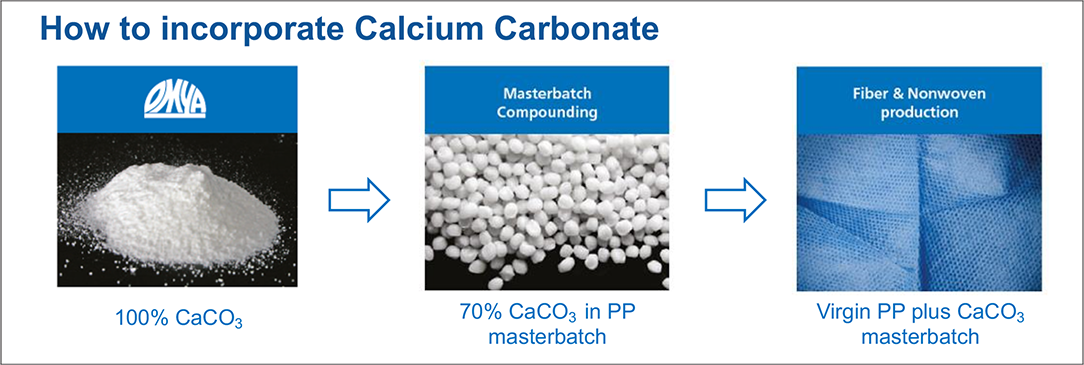
Utilizing filler masterbatch in the plastic industry has become crucial for enhancing product properties, reducing material costs, and realizing environmental benefits.
This detailed exploration will analyze aspects in which masterbatch can influence economic benefits through the “5W + 1H” method.
Who benefits from using filler masterbatch?
Manufacturers of plastic products gain directly by incorporating filler masterbatch into their production lines, leading to reduced material costs and enhanced product properties.
End-users and consumers benefit indirectly through the availability of more affordable and potentially higher-quality plastic products.
The environment benefits from using certain filler masterbatches that contribute to sustainability through reduced plastic use and lower carbon footprints.
What are the economic benefits of using filler masterbatch?

Material Cost Reduction:
Substituting a portion of the more expensive polymer with a less costly filler reduces raw material expenses.
- Efficient Use of Additives and Pigments: Masterbatches allow for the precise and efficient dosing of pigments and additives. Because they are highly concentrated, only a small quantity is needed to achieve the final product’s desired color or performance characteristics. This precision reduces waste and optimizes the cost associated with expensive pigments and additives.
- Reduction in Raw Material Costs: In some cases, particularly with filler masterbatches, the fillers (such as calcium carbonate or talc) are significantly cheaper than the polymer resins they replace. Incorporating filler masterbatch into the polymer matrix can lower raw material costs by partially substituting more expensive resins with less expensive mineral fillers without compromising the product’s integrity.
- Improved Processing and Energy Efficiency: Certain masterbatches can enhance the processing characteristics of plastics, leading to energy savings and increased production efficiency. For example, some additives included in masterbatches can act as processing aids, improving plastic flow through machinery and reducing processing times and energy consumption.
- Inventory Management and Storage Savings: Using masterbatch allows manufacturers to stock base polymers and customize products by adding different masterbatches as needed. This flexibility can lead to reduced inventory costs and space requirements compared to stocking multiple colored or modified resins. It simplifies inventory management and reduces the need for extensive storage facilities for different material variants.
- Waste Reduction: Masterbatches contribute to waste reduction by improving the consistency and quality of the product. The precise dosing reduces the chances of errors in coloration or performance characteristics, leading to fewer rejects and less scrap material. Waste reduction not only saves materials but also the costs associated with waste management.
- Enhanced Product Properties: Adding masterbatches can also improve the properties of the final product, such as UV resistance, anti-static properties, or flame retardancy. Enhancing product properties can open new markets or applications for the product, potentially leading to higher sales volumes without significantly increasing the production cost.
Enhanced Product Properties with masterbatches:
Certain filler masterbatches can improve product properties such as stiffness, thermal resistance, and durability, potentially increasing the product’s value and market appeal.
Processing Efficiency:
Some filler masterbatches can enhance the processing characteristics of plastics, such as better flow properties and reduced cycle times, leading to energy savings and increased production efficiency.
Lightweight Products:
Filler masterbatch can reduce the final product’s weight, which can be particularly beneficial in applications where weight is critical, such as in the automotive or packaging industries. Lighter products can result in lower transportation and handling costs.
Environmental Benefits:
Using filler masterbatch can contribute to sustainability efforts. For example, by incorporating calcium carbonate, a naturally occurring mineral, manufacturers can reduce the reliance on fossil fuel-based polymers, thus lowering the carbon footprint of their products.
Where can the masterbatch be used economically?

Packaging Industry
Plastic Films and Bags: Filler masterbatch, especially with calcium carbonate (CaCO3), improves the mechanical properties and opacity of films for shopping bags, garbage bags, and agricultural films. It makes the material more cost-effective without compromising quality.
Food Packaging: Certain filler masterbatches are approved for food contact applications and can reduce the cost of packaging materials like bottles, containers, and trays while maintaining the required safety standards.
Automotive Components
Interior and Exterior Parts: Filler masterbatches can reduce the weight of automotive parts, contributing to overall vehicle lightweight, which is crucial for fuel efficiency. Parts include dashboards, bumpers, door panels, and various under-the-hood components.
Sound Insulation: Specific fillers enhance sound insulation properties in automotive applications.
Construction Materials
Pipes and Fittings: The use of filler masterbatch in PVC pipes and fittings can improve stiffness and dimensional stability, allowing for the economical production of durable construction materials.
Sheets and Panels: For roofing sheets, wall panels, and flooring, filler masterbatch helps reduce costs while providing UV stability, weather resistance, and improved physical properties.
Consumer Goods
Household Items: Products such as furniture, garden pots, and various household items utilize filler masterbatch to achieve desired aesthetics and durability at a lower cost.
Toys: Filler masterbatch is used in the production of toys to provide a balance between product safety, performance, and cost-effectiveness.
Textiles
Non-Woven Fabrics: In producing non-woven fabrics used for hygiene products, agricultural covers, and geotextiles, filler masterbatch is used to enhance tensile strength and provide antibacterial properties, in some cases, at a reduced material cost.
Electrical and Electronics
Components and Housings: Filler masterbatch can be used to manufacture electrical component housings and insulators, improving flame retardancy and electrical properties.
Agriculture
Mulch Films and Drip Tapes: Utilizing filler masterbatch in agricultural films and irrigation systems can reduce costs while maintaining functionality, such as improved soil temperature control and water efficiency.
Furniture
Outdoor Furniture: Filler masterbatch is used in plastic furniture intended for outdoor use to enhance weather resistance and color stability, making it an economical choice for durable outdoor furniture.
When does using filler masterbatch provide economic benefits?
During Market Fluctuations: When raw material prices are high, filler masterbatches offer a cost-effective alternative.
In Competitive Markets: Where price pressures demand cost reduction strategies without compromising product quality.
In Sustainable Product Development: When there’s a market demand for greener products, using environmentally friendly fillers can provide a competitive edge.
Why use filler masterbatch for economic benefits?
To maintain competitiveness by managing production costs effectively
To increase market share by offering products with improved or additional features without significantly raising prices.
To meet environmental regulations and consumer demand for sustainable products without incurring high costs.
How can manufacturers maximize the economic benefits of using filler masterbatch?
Optimize Filler Content: Determine the optimal filler content to achieve desired product properties without compromising quality.
Select the Right Filler Masterbatch: Choose fillers that best balance cost savings and product performance.
Leverage Technological Advances: Use advanced compounding and blending techniques to ensure uniform dispersion and consistent product quality.
Educate the Market: Inform customers about the benefits of enhanced products made with filler masterbatch to create demand and justify potential price premiums.
Continue your journey into the world of masterbatch by reading “Filler Masterbatch: The Unsung Hero of Plastics Shaping Our Tomorrow”.Click here to read more and expand your understanding.
The close relationship between Calcium Carbonate Powder (CaCO3) and Filler Masterbatch – nature’s synergy.

The implications of utilizing filler masterbatch in various plastic manufacturing processes are significant. They can dramatically improve a product’s UV resistance, impart flame retardancy, and even influence its mechanical properties. And the applications are truly vast, spanning from the bright, colorful casings of consumer electronics to the robust containers used in agriculture. However, these benefits come with considerable environmental drawbacks, especially with traditional formulations.
Common Materials Used in Traditional Filler Masterbatch
Heavy loads of fillers like talc, calcium carbonate, and barite are common in conventional masterbatch solutions. While these materials excel in their functional roles within plastics, they often mean a heavier environmental burden. The extraction, processing, and shipping of these minerals contribute to carbon emissions, and their incorporation into plastics can render the end products non-recyclable or difficult to decompose.
Calcium Carbonate (CaCO3) powder plays a crucial role in additive filler formulations for many compelling economic, environmental, and product performance reasons. In addition to the advantages of technical characteristics such as enhanced product properties, improved aesthetics, flexibility, and compatibility, an essential factor of Calcium Carbonate Powder is to bring economic benefits to customers
Economic benefits of CaCO3 powder in the filler masterbatch
Cost efficiency: One of the main reasons explaining the importance of CaCO3 powder in filler masterbatch is its ability to reduce production costs significantly. CaCO3 is typically less expensive than the polymers it replaces, making it a cost-effective filler that can reduce overall material costs without sacrificing quality.
Abundant resources: CaCO3 is widely available globally, ensuring a stable and scalable source to support stable production without the fluctuations common with petroleum-based polymers. However, the origin of the country where the mineral mines are located will have different qualities, and currently, the whiteness of CaCO3 from Vietnam is the most excellent.
Your Story, Your Success
Every manufacturer’s economic story uniquely blends challenges, choices, and conquests. If the filler masterbatch is the protagonist in your story, it’s time to document and share the success. Encourage feedback, questions, and a spirited exchange of ideas to enrich the collective knowledge base.
For manufacturers navigating the currents of cost pressures and quality demands, the filler masterbatch presents an opportunity to paint a more profitable economic picture. It’s time to color your economic canvas with Filler Masterbatch – and watch it bloom with the hues of prosperity.
Continue your journey into the world of masterbatch by reading ‘Interview Series: “Voices of Innovation: Industry Leaders on the Future of Filler Masterbatch”‘.Click here to read more and expand your understanding.
We encourage you to continue the conversation. Share your thoughts, experiences, and insights in the comments section below. The exchange of knowledge and ideas is essential to collectively unlock the potential of filler masterbatch technology and drive the industry forward.
Whether you’re looking for a reliable supplier, interested in exploring our product range, or wish to learn more about our cutting-edge manufacturing processes, our team is ready to assist you.
Contact us today to schedule a visit or consultation, and let’s explore how Megaplast can elevate your business to new heights. Your partnership in innovation starts here.
